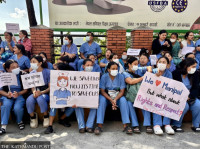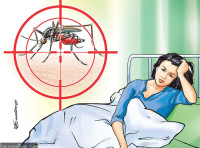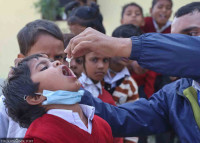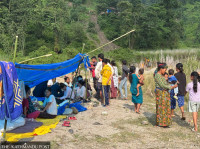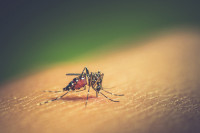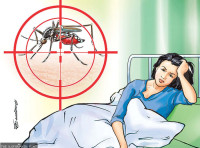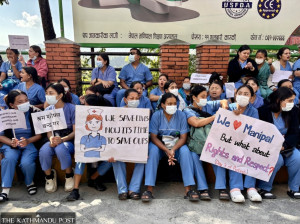Health
Over 2,200 people infected with scrub typhus this year
Many health workers lack the knowledge for its diagnosis as the symptoms of scrub typhus are similar to those of some other diseases.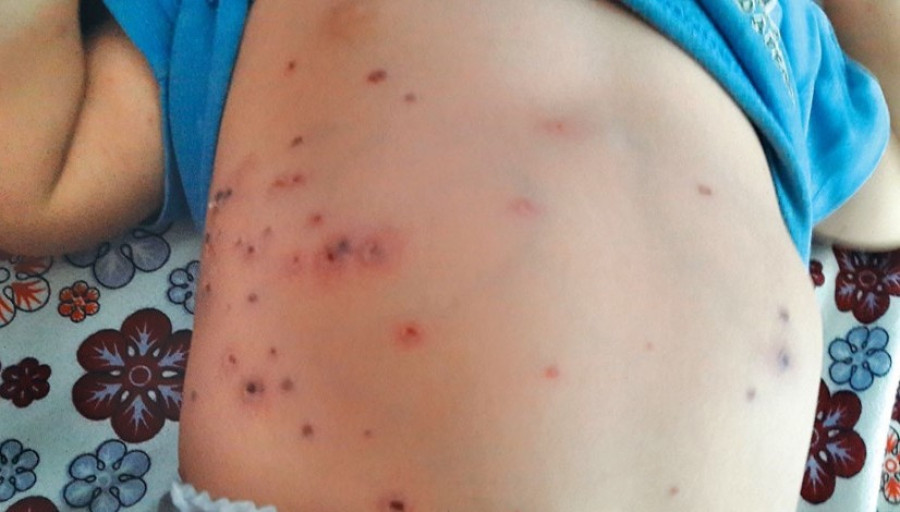
Post Report
As many as 2,286 people across the country have been infected with scrub typhus since the start of 2023.
Officials at the Epidemiology and Disease Control Division say they expect more cases in the coming days as the peak season of the infection of the disease is September.
“Many more people might have been infected with the deadly disease, as it takes time for all the cases to get reported in our system,” said Gokarna Dahal, chief of the Vector Control Section at the division. “No death from infection of scrub typhus has been reported so far this year."
Scrub typhus, also known as bush typhus, is an infectious disease caused by the parasite Orientia tsutsugamushi, a mite-borne bacterium. It spreads in humans when bitten by infected chiggers (larval mites) found in mice.
Doctors point out high fever, headache, abdominal pain, backache, joint and muscle pain, red rash, nausea and vomiting as some of the symptoms of scrub typhus infection. Patients with severe illness may develop bleeding which could lead to organ failure. The infection can lead to respiratory distress, inflation of brain, lungs, kidney failure and then multi-organ failure. If not treated immediately, it could be fatal.
Nepal saw a surge in scrub typhus cases after the calamitous 2015 earthquakes that killed nearly 9,000 persons across the country.
Three months after the quakes, the BP Koirala Institute of Health Sciences, Dharan had alerted the Epidemiology and Disease Control Division about six children with unusual fever and severe respiratory problems.
Serum samples were collected for subsequent tests in Kathmandu and Bangkok that confirmed a scrub typhus outbreak. By then, four children had already died in the course of the treatment. By the end of the year, 101 cases were confirmed in 16 districts and four more people succumbed to the disease.
The magnitude of the outbreak escalated in 2016—831 cases of scrub typhus were reported in 47 districts and 14 people died by the end of that year.
According to data from the Ministry of Health and Population, more than 1,026 people were infected with the disease in 2020, in 2021, their number increased to 1,999, while in 2022, it rose to more than 2,900.
This year so far, as many as 2,286 persons have reportedly been infected with the disease over a period of eight months.
The neglected tropical disease has been emerging as a new health challenge in Nepal of late, according to doctors.
The risk of severity and fatality can be minimised if the patients are diagnosed and treated early, they say.
Ordinary antibiotics like doxycycline and azithromycin, among others, which are on the essential drugs list supplied by the government to health facilities across the country for free distribution, can cure the disease.
But what is concerning is that many health workers including doctors themselves lack knowledge of the diagnosis. Many health facilities lack reagents to carry out tests for scrub typhus.
Doctors can detect the disease through the symptoms but the chances of misdiagnosis are high as scrub typhus symptoms are similar to those of some other diseases.
Dahal concedes that the health facilities do not have sufficient reagents for diagnosing the disease.
“As there are 753 local and seven provincial governments in place, the agencies under those administrations should also shoulder responsibilities to contain the spread of deadly infections,” said Dahal. “It is not possible to supply testing kits sufficiently from a federal agency to all the health facilities across the country.”
Doctors say it would be too late if one waited for the lab report to start treatment. They said it takes around a week for the report of scrub typhus to come and by that time, the patient, if not treated timely, can go into coma and suffer a multi-organ failure.




 17.12°C Kathmandu
17.12°C Kathmandu